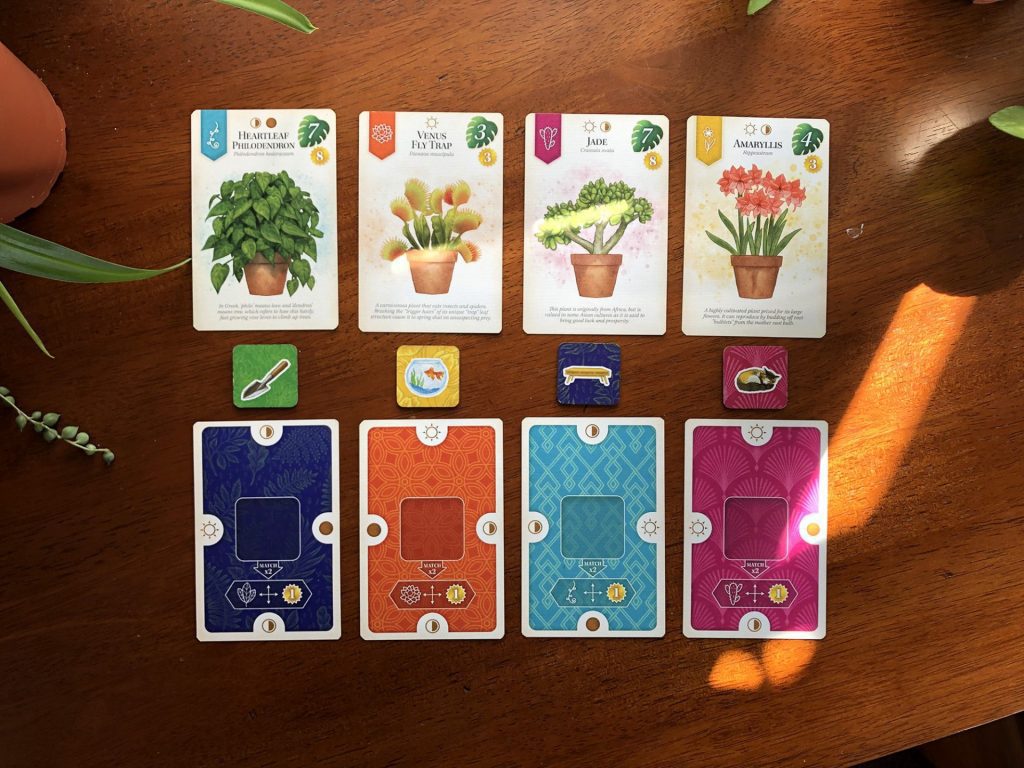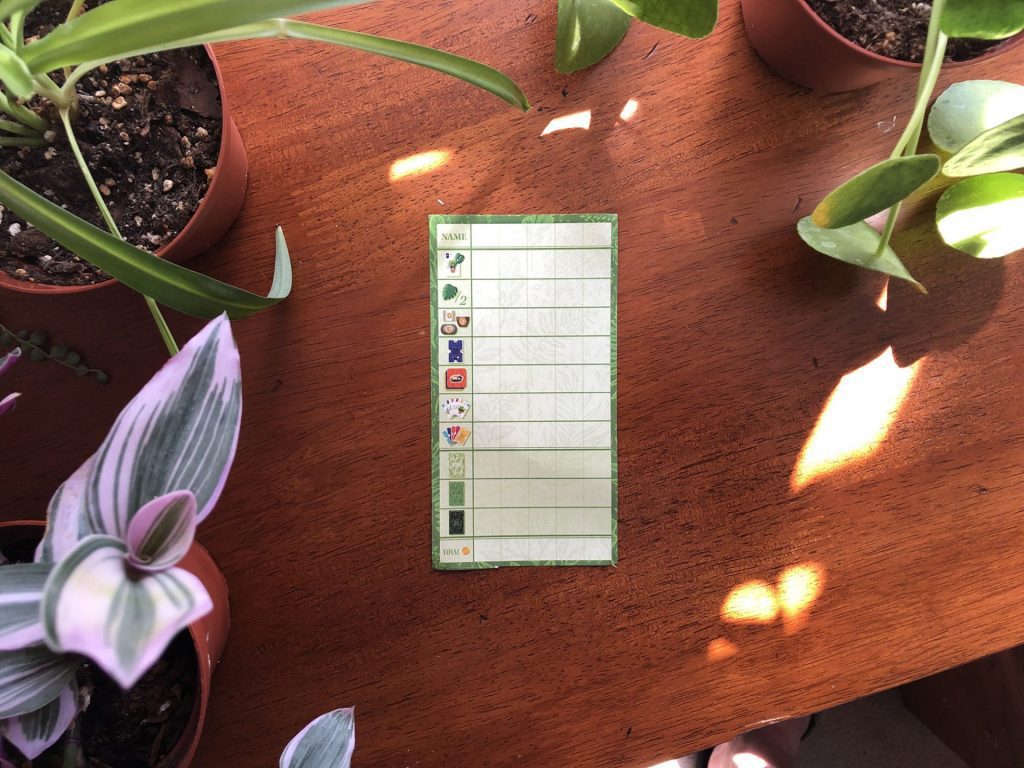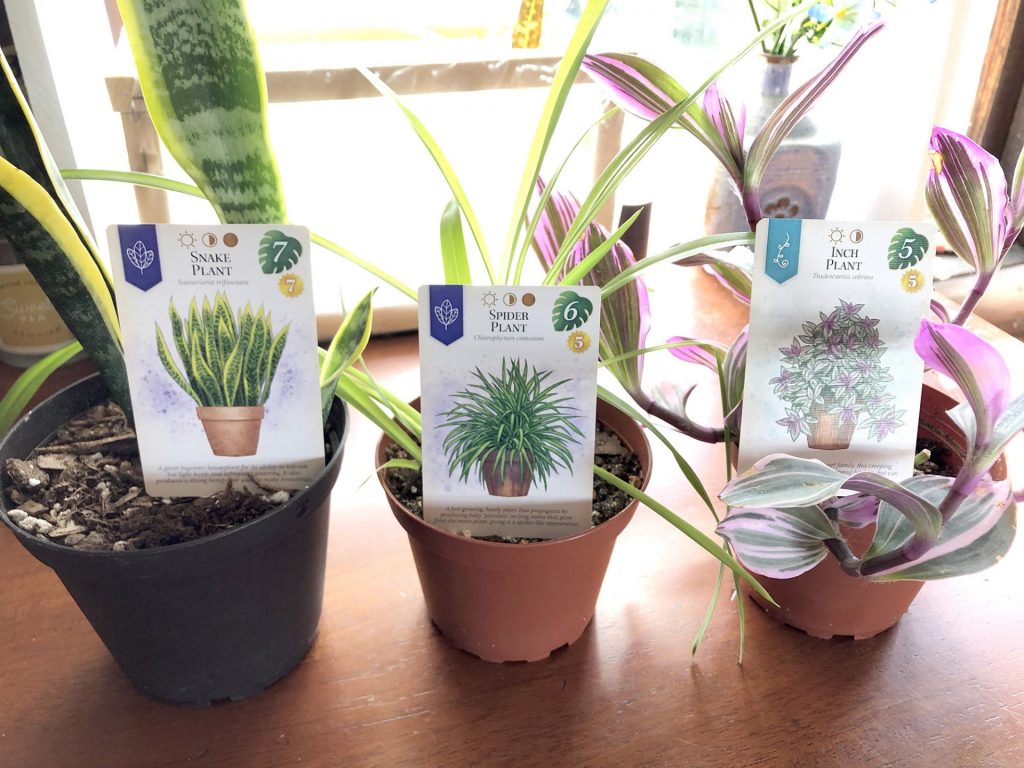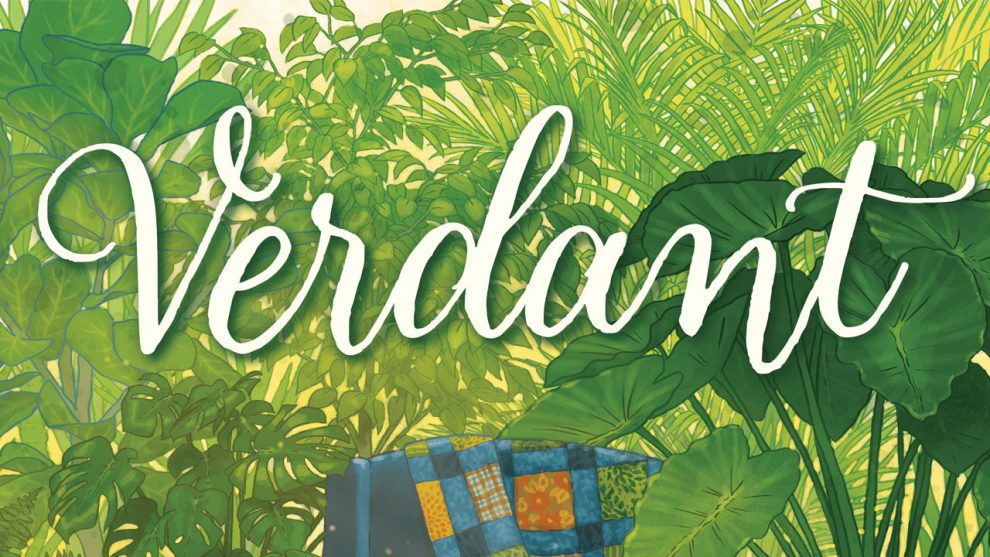Disclosure: Meeple Mountain received a free copy of this product in exchange for an honest, unbiased review. This review is not intended to be an endorsement.
Have you ever looked at a “home and garden” type magazine? You know the ones; the houses all have gorgeous artwork, comfy mismatched couches, and colorful plants everywhere? And then thought to yourself: “I wish I could play a game about this exact thing!”? If so then I’ve got great news for you. Verdant, from the wonderful and talented Flatout Games Collaborative, is sure to fit the bill. Let’s talk about how you can design an inviting and verdant home of your very own.
Going Green: A Verdant Overview
Flatout Games certainly has a type. If you’ve played any of their other games like Calico, Cascadia, or Point Salad, then you know they love set collection, tile laying, and interesting and unique themes. Verdant checks all of those boxes.
In Verdant players you’ll be designing a house by placing room cards and plant cards into a 3 x 5 checkerboard pattern. Along the way you’ll get to add the occasional accent item: couches, pets, bookshelves, and other assorted accent pieces.

Placing Room and Plant Cards
The goal of the game is to earn the most points, accomplished primarily by making sure your plant cards are placed in the ideal location for their sunlight needs. Each plant needs either full or partial sunlight, or a shady place, while each room provides one of those three sunlight opportunities. When plant or room cards are placed next to each other, the sunlight symbols are compared and for each matching symbol (right, left, above, or below), the plant receives 1 verdancy token. These tokens are wooden and super cool, looking like some sort of fern.
Once you meet the plant card’s verdancy requirement (located in the top right corner of the card) you’ll earn yourself points equal to the number in the gold seal (also in the top right corner of the card). Completed plants will also earn a plant pot token which can garner you additional bonus points for completing the plant card earlier in the game.
You’ll start the game with one plant and one room card, and throughout the course of the game you’ll be selecting cards from a shared market and placing them into your home.
Selecting New Cards
If you’ve played Cascadia before, you’ll be immediately familiar with the market layout, but in Verdant there’s a twist. In Verdant you’ll be able to select from one of 4 room cards or one of 4 plant cards, but you’ll also be selecting the matching room token seen in the middle row. Room tokens add an extra layer of complexity and provide valuable scoring possibilities, as well as giving you the chance to make your home unique.

If you’re observant you’ve probably already noticed that the room and plant cards (and room tokens) share a color scheme or suit. These suits represent 5 different plant types and open up yet another opportunity for points.
- Plants want to be in the rooms which benefit them the most in order to gain more verdancy and therefore more points.
- Rooms want lots of plants of the same suit around them. Each room will score 1 point for every plant of a matching suit next to it (right, left, above, or below). And if that room card has a matching colored room token on it, then every same-suited plant card is worth 2 points.

Room tokens provide set collection bonuses at the end of the game, and are worth an increasing number of points the more unique items you have. Wind up with only 2 different items and you’ll collect 3 points. But if you can gather 4 different items, that’s a cool 9 points.
In addition to room tokens, you’ll find 3 different types of items: fertilizer, watering can, and trowel. Each of these three tokens give you ways to add verdancy to your plants when used cleverly. The game also includes “green thumb” tokens that provide extra ways to increase your verdancy (along with other actions that affect the market).

Scoring Your Perfect Home
After all players have completed their 3 x 5 home, scoring takes place. Collect points for completed plants and plant pot bonus tokens, room bonuses and room tokens. And finally you’ll also be able to score one last set of points if you’ve collected room and plant cards in each of the 5 colors.

The player with the most points is the winner.
Final Thoughts on Verdant
I feel like I’m always raving about Flatout Games, but their games just speak to me. I love new and interesting themes, tile laying is my jam, and set collection might just be one of my favorite mechanisms. And because Verdant has all of those things I can’t help but love it.
But before I talk too much more about the game I want to tell you about my 15yo daughter. She loves plants. For the past year and a half she’s been slowly converting her bedroom into a mystic garden. She has plants covering her desk, her bookshelves, and even hanging from a trellis above her bed. At least twice a week now for the past few months she asks my wife and I to “take her to get some more plants”.
So when I first saw the cover illustration from Beth Sobel I knew I had to get her to play. And she was enchanted! So much so that she went through the entire plant deck afterwards and pulled out every card for which she had a matching plant. There were…a lot. Here’s some of the ones we thought most closely resembled their illustrations. Verdant gets a thumbs up from a certified green thumb.

But what did I think about Verdant? I thought it was great. In addition to some of the things I’ve already mentioned, I love it when designers include a built-in “timer” in their games. Since players each begin with 2 cards, and will be laying out a total of 15, that means there’s exactly 13 rounds; and it’s very clear how the game progresses. Verdant offers an interesting point of tension during the end game. Because plant and room cards must always be alternated, you might end up forced to only select plant cards in your last turn or two (or the same with room cards). This happened to us several times and it can be a bit stressful; hoping for just the right card, but often being forced to take one that was just so-so. Even worse, getting a card that provides no benefit.
And speaking of end game, that’s another thing you have to plan for. Plant cards played earlier in the game are more likely to have room cards played next to them, which is a primary source of verdancy. But plant cards played later in the game won’t have as many opportunities to get sunlight. So do you take lower point plant cards in hopes of getting the valuable bonuses, or do you focus on matching up room/plant suits in order to get the room bonus.
Given the riot of color in the game you might think that Verdant would have major issues for color blindness. But the team has you covered. Every suit not only has a symbol, but it also has a unique pattern and a hue that appears to be discernible against most of the common color vision deficiencies.
So what are you waiting for? Back Verdant on Kickstarter and start up your own home and garden magazine. Verdant will help you make each home you create a masterpiece!












Add Comment